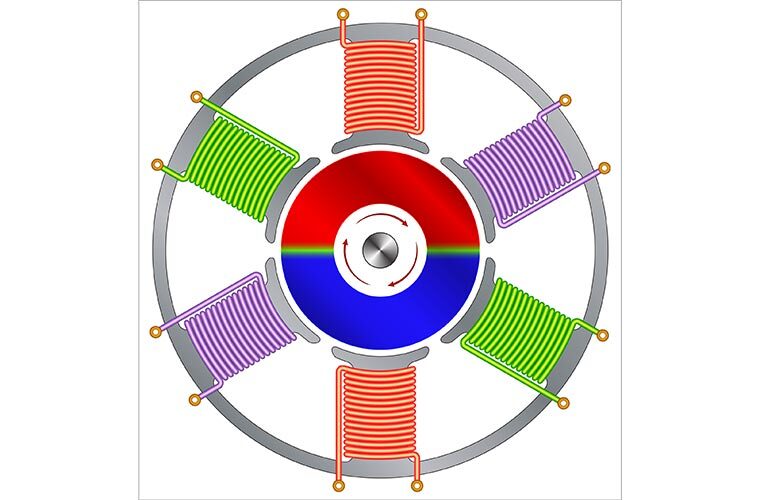There was a moment in automotive history when a fuel pump was not used at all. Instead, gravity was all that was needed to supply fuel to the carburettor. You would just open a valve and let the fuel flow to the carburettor.
It’s the same way that my lawnmower and tractor work – their petrol tanks reside above the carburettor.
The most famous example of a vehicle that did not use fuel pump is the classic Ford Model T. Its 38-litre fuel tank was mounted under the front seat and totally relied on gravity. The only problem? When the fuel level was too low, the Model T could not climb up a hill. The solution was to climb the hill in reverse.
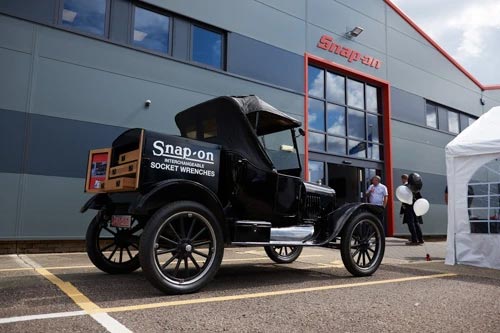
I’m sure Ford, being a bit embarrassed by only being able to climb a hill in reverse, decided to mount the tank higher and closer to the to the carburettor in their later 1926 model. As it went, they mounted it high on the firewall in the engine compartment, which allowed gravity to do its thing and climb hills head-on.
The aftermarket began to offer a fuel pump and it became a common modification that somewhat improved vehicle performance. The OE manufacturers caught on quick and the mechanical fuel pump entered the scene in the 1920s.
These fuel pumps were mechanical devices bolted to the engine and relied on a lever to pump fuel to the carburetor. This was kind of like an old hand-powered water well pump, if you’re familiar.
In the 1970s, Chevrolet introduced the first car to use an in-the-tank electric fuel pump. I even owned one in high school. It was an orange 1973 Chevrolet Vega I nicknamed it ‘the pumpkin’.

In fact, my first experience with electrical diagnosis was when my fuel pump quit working. I bought a shop manual for it from the parts store in town and discovered in the wiring schematic that the power to the fuel pump was ran through the oil pressure switch.
Sure enough, the switch had power to it, but not through it. Plenty of oil and pressure, so I replaced the switch and I was ready for cruise night. I remember being impressed to have the safety of killing the engine by cutting off the fuel pump if oil pressure was lost. That idea would save blowing an engine.
We were now in the electric fuel pump age of the 1970s and 1980s. This transformation allowed the pumps to be mounted anywhere and greatly increased longevity. These first electric pumps were feeding carburetors and only needed 4 to 6 PSI. Pumps would need to provide fuel injection equipped vehicles with 40-65 PSI.
Before we discuss the brushless fuel pumps, let’s review the conventional brushed electric fuel pumps.
Component testing for these conventional brushed pumps require three different test areas:
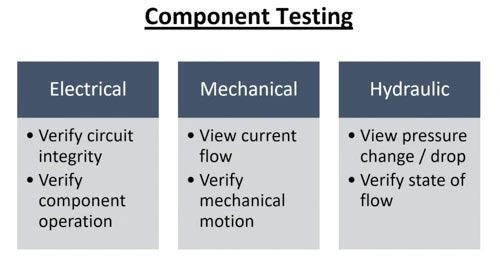
Now let’s look at the components within a brushed motor. The brushes provide voltage to the rotor coils and the coils spin. The magnets are stationary.
So, there’s the electric motor. When we add a pump to it, we’re in business.
You can tell a lot about the condition of the fuel pump by performing a current ramp test using a low amp probe and your lab scope.
Using a Snap-on tool equipped with Guided Component Tests, start by getting your hook-up instructions.
Place the jaws of the probe around a wire anywhere in the fuel pump circuit.
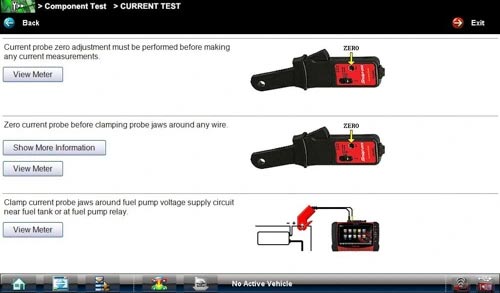
Most automotive fuel pumps have eight commutators in the motor. Each bump in graph below represents a commutator. If we count eight bumps, that’s one revolution of the motor.
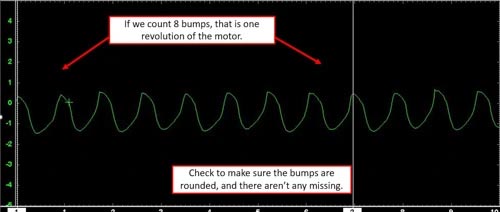
You can calculate the RPM of the pump by measuring how long it takes to complete one revolution. If the measurement is 6.95 millisecond for one revolution, we need to do some simple maths:
There are 60,000 milliseconds in one minute. Divide 60,000 by 6.95 to get the RPM of the pump. 60,000 / 6.95 = 8633.
Based on the calculation above, that is a good pump, as most pumps run above 5,000 RPM. The training embedded in the Snap-on Guided Component Tests will instruct you that 3,500 and below should be replaced immediately.
Now onto the brushless fuel pumps.
A higher performance and longer lasting pump, the brushless fuel pump should last the lifetime of the car, in theory. A brushed pump can last 1,000 to 3,000 hours on average which is around 60,000 to 180,000 miles. A brushless pump can attain tens of thousands of hours on average, because there are no brushes to wear out. Makes logical sense.
It is more efficient but also a bit more complex. It needs to be controlled by a computer control module. This motor is three phase with three sets of coils. Instead of the magnets being stationary and the coil turns, the coils are stationary, and the magnets turns. Resulting in no need for brushes.
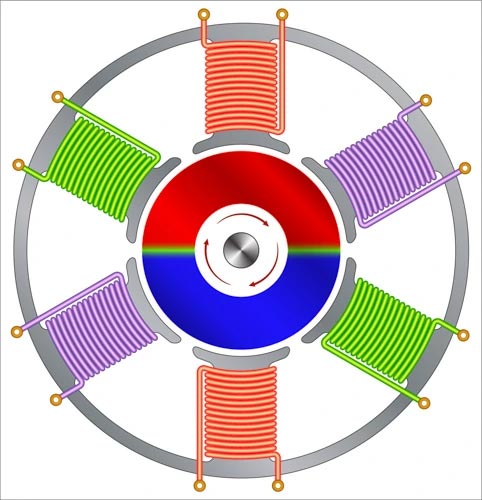

There are three circuits coming from the control module above: FPV, FPU, FPW. They send an alternate pulse voltage to their respective set of coils. This can be seen in the three traces of the lab scope below.
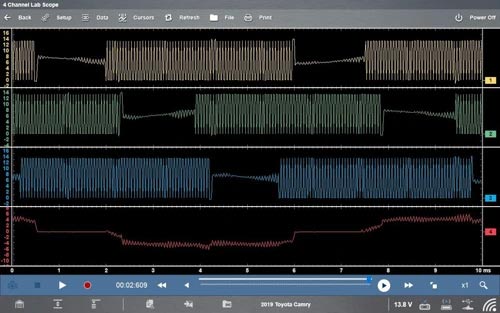
So, the brushless fuel pump, how can it get any better? Then again that’s what I said about the electric fuel pump on my Vega.
Keith Wray is Keith Wray Snap-on’s US national training manager.

